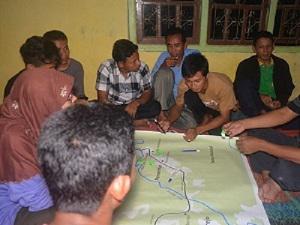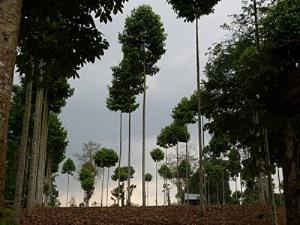Nurul L. Winarni
Other projects
7 Mar 2012
Ecosystem Service, Supporting the Forest, Supporting the People: Evaluating Ecosystem Services of Forest Edge for Park Boundary Support System
This study is a combination of both monitoring survey and community engagement to build and map the indicator of biodiversity ecosystem services around the edge of the park.

Participatory mapping.
Forest edge at park boundary provides biodiversity ecosystem services such as pollination and seed dispersal which maintain sustainable agricultural crop harvesting while preserving the integrity of forest edge. Bukit Barisan Selatan National Park (BBSNP) in Southern Sumatra contains significant populations of globally important wildlife, including Sumatran rhinoceros, tiger, elephant, and over 300 bird species. BBSNP is also key habitat for pollinating agents and seed dispersers such as birds and bats.

Agriculture area.
Previous research suggested that several species of bulbuls present at highest density in the forest edge suggested that the species is an important seed disperser for restoration in the secondary forest such as forest edge. In addition, Rhinoceros hornbill, birds with large home range was also present in the area. Such forest edge seemed to be able to attract seed disperser birds which is depended on distance between forest remnants and agricultural gardens, food and habitat availability provided by agricultural gardens, and conditions of forest remnants. The presence of bulbuls at the forest edge may be an indicator of regeneration function of forest edge. In addition, many Megachiroptera, the frugivorous bats were also present and correlated to many edible fruiting trees such as banana and coffee.
Assessment of these species as indicator of biodiversity ecosystem services through community engagement is therefore valuable to assist the management of forest edge by maintaining sustainable agricultural crop harvesting while preserving the integrity of forest edge of the park boundary. An indicator of biodiversity ecosystem services which can easily identified and monitored by the local people is needed to assess the health of the ecosystem. The study will be conducted in Bukit Barisan Selatan National Park which threatened by continuous deforestation and encroachment. This study is a combination of both monitoring survey and community engagement to build and map the indicator of biodiversity ecosystem services around the edge of the park.